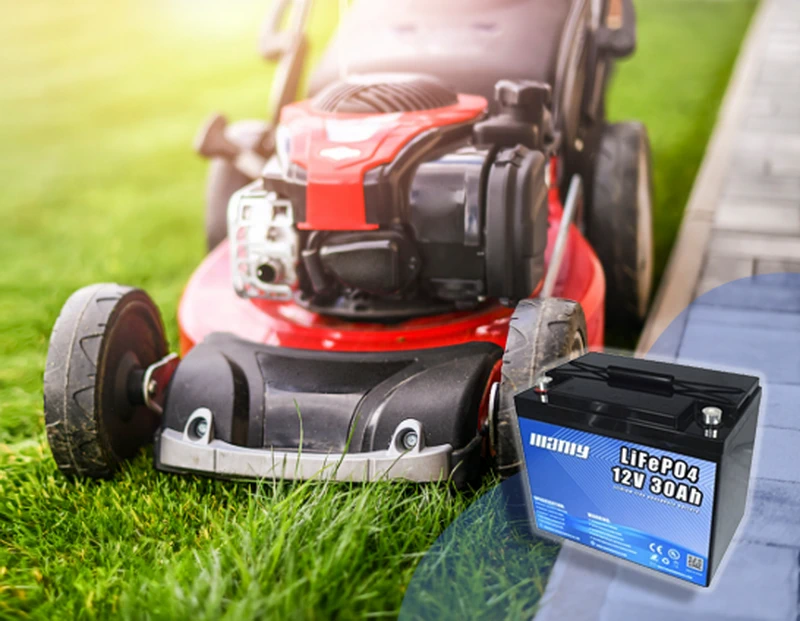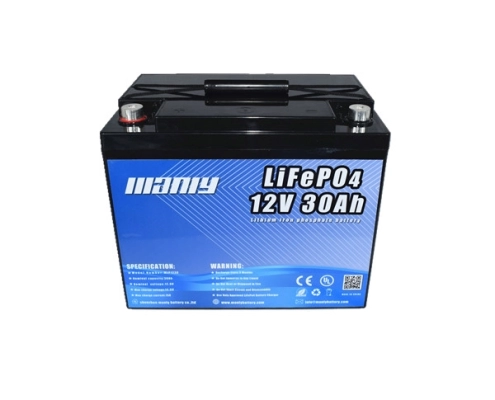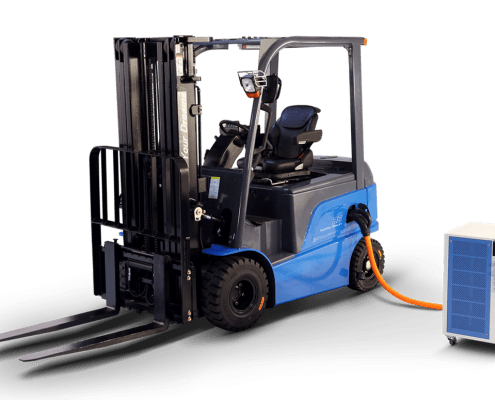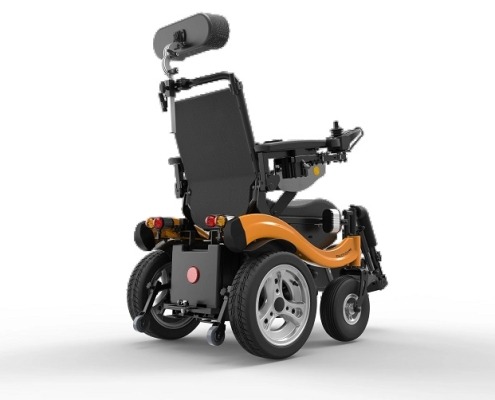2024 Lawn Mower Battery Guide: From Purchase to Maintenance
Table of Contents
- 2024 Lawn Mower Battery Guide: From Purchase to Maintenance
- What Type of Battery is a Lawn Mower Battery?
- How Many Volts is a Lawn Mower Battery?
- What Size Battery for Lawn Mower?
- How Long Does a Lawn Mower Battery Last?
- Where to Buy Lawn Mower Battery
- 5 Best Lawn Mower Batteries
- How to Replace Lawn Mower Battery
- How Do You Maintain Your Lawn Mower Battery?
- How to Store Lawn Mower Battery for Winter
- How to Test a Lawn Mower Battery
- Conclusion
- Learn More About Battery
Choosing the right lawn mower battery is essential for efficient and reliable lawn care. Lawn mower batteries vary in type, voltage, size, and lifespan, each with unique characteristics tailored to different mower models and user needs. Lead-acid batteries, for example, are known for their affordability and widespread use, while lithium-ion batteries are prized for their lightweight design and longevity. Understanding these distinctions can help you select the best battery to suit your lawn mower’s requirements, ensure optimal performance, and reduce maintenance needs. This guide provides detailed insights into selecting, maintaining, and storing your lawn mower battery, along with comparisons between battery-powered and gasoline mowers. Whether you’re considering an upgrade or simply looking to extend the life of your current battery, these tips will keep your lawn mower operating at its best.
What Type of Battery is a Lawn Mower Battery?
Lawn mower batteries come in a few main types, each suited to different needs. The lawn mower battery you choose will depend on factors such as weight, maintenance requirements, and longevity. Here are the primary types:
- Lead-Acid Batteries: This type is the most widely used in lawn mowers due to its affordability and reliability. Lead-acid batteries are typically heavier than other options but offer dependable performance. There are two main subtypes:
- Flooded Lead-Acid (FLA): FLA batteries require regular maintenance, such as monitoring the water levels to ensure the battery stays functional.
- Sealed Lead-Acid (SLA): SLA batteries are maintenance-free and can be installed in any position, making them convenient for users looking for a low-maintenance option.
- Lithium-Ion Batteries: Known for their lightweight design and long lifespan, lithium-ion batteries are increasingly popular for modern electric lawn mowers. These batteries often use lithium-cobalt oxide (LiCoO2) or lithium iron phosphate (LiFePO4) chemistry, providing high energy density and efficiency. A typical lawn mower battery in this category is a 40V lithium-ion, which delivers excellent power for household lawn mowers. These batteries charge quickly, usually within an hour, and can last up to a decade with proper care.
- Nickel-Cadmium (NiCd) Batteries: Although less common today due to environmental concerns and the advent of more advanced technologies, NiCd batteries can still be found in specific applications. They are durable in extreme temperatures but suffer from the memory effect, which gradually reduces their capacity over time.
Each lawn mower battery type offers unique benefits, from the affordability and reliability of lead-acid options to the lightweight efficiency of lithium-ion models. When choosing, consider your lawn mower’s power needs, maintenance preferences, and how long you want the battery to last.
How Many Volts is a Lawn Mower Battery?
Understanding the voltage requirements is essential when choosing a new lawn mower battery. Most riding lawn mowers operate with a 12 volt battery to provide ample power for larger engines and longer use. However, some smaller push mowers and older models may use a 6 volt battery, which is typically adequate for lighter engines with lower power demands.
Lawn mowers come in various types, each designed for specific tasks and powered by batteries of different voltages to match their requirements. Here’s a quick overview of common lawn mower types and their corresponding battery voltages:
- Push Mowers:
- Manual Reel Mowers: Human-powered, these mowers don’t require a battery.
- Electric Push Mowers: Typically use batteries from 36 to 40 volts, suitable for small to medium-sized lawns.
- Self-Propelled Mowers:
- Electric Self-Propelled Mowers: Generally equipped with batteries between 40 to 60 volts, providing extra power to drive the wheels and help mow larger areas.
- Riding Mowers:
- Standard Riding Mowers: Typically use 12-volt batteries for engine starting and accessory power.
- Electric Riding Mowers: Use higher-voltage batteries, usually between 48 to 72 volts, delivering ample power for both propulsion and cutting.
- Zero-Turn Mowers:
- Gas-Powered Zero-Turn Mowers: Often use 12-volt batteries mainly for engine starting.
- Electric Zero-Turn Mowers: Feature batteries from 48 to 80 volts, offering high power output for efficient mowing, especially in commercial settings.
- Robotic Mowers:
- Operate on batteries between 18 to 28 volts, suitable for maintaining small to medium lawns with minimal intervention.
If you’re unsure about the voltage requirement for your mower, you can check in a few ways:
- Inspect the Existing Battery: Voltage information is usually labeled on the battery case, making it the quickest way to find the correct replacement.
- Consult the User Manual: Your mower’s manual will list the required voltage to ensure compatibility and prevent issues with mismatched power.
- Check the Manufacturer’s Website: Many manufacturers provide battery specifications for each model, which is especially useful if the original battery is missing or the label is unreadable.
Choosing the right battery voltage is key to achieving optimal mower performance. Higher voltage batteries generally offer more power and longer run times, making them ideal for larger lawns and heavier tasks. In contrast, lower voltage batteries are sufficient for smaller lawns and lighter tasks. Always refer to the manufacturer’s specifications to ensure safe, compatible, and efficient operation.
What Size Battery for Lawn Mower?
Selecting the correct size lawn mower battery is essential for optimal fit and performance. Unlike car batteries, lawn mower batteries are typically smaller and come in various sizes, commonly grouped by battery group numbers. These groups classify batteries based on their physical dimensions, ensuring compatibility for specific equipment. Below is a reference table that provides an overview of popular battery groups and sizes commonly used in lawn mowers:
Lawn Mower Battery Size Chart:
| Battery Group | Length (inches) | Width (inches) | Height (inches) | Voltage |
| U1 | 7.75 | 5.1875 | 7.3125 | 12V |
| YTX30L-BS | 6.5625 | 4.9375 | 6.8750 | 12V |
| U1R | 7.75 | 5.1875 | 7.3125 | 12V |
| YTX24HL-BS | 8.0625 | 3.4375 | 6.375 | 12V |
| 21 | 8.19 | 6.81 | 8.75 | 12V |
| YTX20L-BS | 6.875 | 3.4375 | 6.375 | 12V |
| 22F | 9.5 | 6.875 | 7.3125 | 12V |
| YTX14-BS | 5.875 | 3.4375 | 5.75 | 12V |
| 22NF | 9.4375 | 5.5 | 7.1875 | 12V |
| YTX12-BS | 5.875 | 3.5 | 5.125 | 12V |
| 24 | 10.25 | 6.81 | 8.87 | 12V |
| YTX9-BS | 5.875 | 3.4375 | 4.125 | 12V |
| 27 | 12.06 | 6.81 | 8.75 | 12V |
| YTX5L-BS | 4.4375 | 2.75 | 4.125 | 12V |
| 30H | 13.5 | 6.81 | 9.25 | 12V |
| 31 | 13 | 6.72 | 9.44 | 12V |
| 45 | 9.4375 | 5.5 | 8.75 | 12V |
| 70 | 9.0625 | 7.0375 | 7.8125 | 12V |
| 4D | 20.75 | 8.75 | 9.88 | 12V |
| 8D | 20.62 | 10.95 | 10.17 | 12V |
When choosing a replacement lawn mower battery, it’s crucial to match the battery group with your mower’s specifications. Batteries of the same group are generally compatible, even across different manufacturers. Always verify with your mower’s manual or manufacturer to ensure you select the right size for compatibility and safe operation.
How Long Does a Lawn Mower Battery Last?
The lifespan of a lawn mower battery depends largely on the type of battery, its usage patterns, and maintenance practices. Here’s a look at typical lifespans for different types of batteries:
- Lead-Acid Batteries: Common in riding mowers, lead-acid batteries usually last around 3 to 5 years with regular maintenance, such as charging and keeping the terminals clean.
- Lithium-Ion Batteries: Known for efficiency and durability, lithium-ion batteries typically last 2 to 5 years or about 300 to 500 charge cycles, depending on care. High-quality lithium-ion batteries can last 5 to 10 years if properly maintained.
- Nickel-Cadmium (NiCd) Batteries: Although less common due to environmental concerns, NiCd batteries last 2 to 5 years but may require more frequent replacement due to the “memory effect,” which reduces capacity over time.
Battery life can be extended with good maintenance practices, like avoiding full discharge, storing in a cool, dry location, and using a charger designed for the specific battery type.
Battery-Powered vs. Gasoline Lawn Mowers: Usage and Longevity Comparison
Battery-powered lawn mowers have a lifespan comparable to gasoline mowers. While battery-powered models generally last 8 to 10 years, gasoline-powered mowers have a typical lifespan of 10 to 15 years. Below is a comparison of single-use run times and overall mower lifespan for each type:
| Mower Type | Battery Type | Single Use Run Time | Battery Lifespan | Mower Lifespan |
|---|---|---|---|---|
| Battery-Powered Mower | Lead-Acid | 30-60 minutes | 3-5 years | 8-10 years |
| Battery-Powered Mower | Lithium-Ion | 60-90 minutes | 5-10 years | 8-10 years |
| Battery-Powered Mower | Nickel-Cadmium | 30-45 minutes | 2-5 years | 8-10 years |
| Gasoline Mower | Not applicable | 1.5-2 hours | Not applicable | 10-15 years |
- Single Use Run Time: The operation time on a full charge or tank.
- Battery Lifespan: Expected years before the battery needs replacing.
- Mower Lifespan: Total expected lifespan of the mower with proper maintenance.
Advantages of Switching to Battery-Powered Lawn Mowers
While gasoline mowers may offer longer run times per session, battery-powered mowers provide several key advantages:
- Environmental Benefits: Battery mowers produce no emissions, making them an eco-friendly choice.
- Reduced Noise: Battery mowers are quieter than gasoline models, which is ideal for residential areas.
- Lower Maintenance: Battery-powered mowers require less maintenance, as they don’t need oil changes, spark plug replacements, or fuel filter changes.
- User-Friendly Operation: With push-button starts and lighter designs, battery mowers are easy to operate.
- Cost Savings Over Time: Although the initial cost may be higher, battery mowers save on fuel and maintenance expenses.
- Safer Storage: Battery mowers don’t require gasoline storage, reducing risks of leaks or fumes.
- Instant Start-Up: Battery mowers start instantly without the hassle of priming or pulling a cord.
- Reduced Vibration: Less vibration results in a more comfortable experience for the user.
- Energy Efficiency: Battery mowers convert energy efficiently, minimizing waste.
- No Fuel Storage Needed: With no need for gasoline, battery mowers eliminate fuel-related storage concerns.
In summary, while gasoline-powered mowers may last slightly longer, battery-powered mowers offer compelling benefits in terms of environmental impact, ease of use, and reduced maintenance. These advantages make them a practical and eco-friendly choice for many homeowners looking to switch from traditional gasoline-powered models.
Where to Buy Lawn Mower Battery
When shopping for a lawn mower battery, consumers often turn to retailers like Walmart and Amazon. While these stores offer convenience, they typically source their batteries from manufacturers and add their markup, making the final price higher for the consumer. Some well-known brands even purchase battery cells from manufacturers, rebrand them, and then sell at a premium.
To avoid these extra costs, it’s beneficial to buy directly from the b2b manufacturing source. For instance, purchasing from a manufacturer like MANLY Battery can eliminate the middleman markup, providing direct access to high-quality lawn mower batteries at a competitive price.
Why Buy from MANLY Battery?
As one of China’s top business wholesale battery producers with over a decade of experience, MANLY Battery offers unique benefits for both individual and business customers:
- Cost Savings: MANLY Battery offers attractive wholesale discounts for bulk purchases, reducing the cost per unit. Orders below 200 batteries are available at regular prices, while 200-500 units receive a 5% discount, and orders over 500 units enjoy a 15% discount. This is ideal for businesses or landscapers needing a reliable supply of batteries.
- Quality Assurance: MANLY Battery prides itself on quality, backed by global certifications like UN38.3, IEC62133, UL, and CE. This commitment to safety and durability is further reinforced by a 10-year warranty.
- Customized Solutions: Unlike standard retail products, MANLY Battery provides extensive customization options tailored to your specifications, from voltage and capacity to design and connectivity features. Whether you need batteries for personal lawn mower use or a fleet of mowers, MANLY Battery can meet your needs.
- High Efficiency and Durability: MANLY’s LiFePO4 batteries are built for peak performance, with an impressive energy efficiency rate of 95% and reliable operation in temperatures from -20°C to 75°C. This durability ensures that your lawn mower battery will last longer and perform better than standard lead-acid options.
Choosing a lawn mower battery directly from a manufacturer like MANLY Battery not only saves you money but also offers a level of quality and customization unmatched by typical retail options. Whether you’re purchasing a single battery or need bulk orders, MANLY Battery’s direct-to-consumer model provides both value and dependability.
5 Best Lawn Mower Batteries
Selecting the right lawn mower battery can significantly impact the performance and lifespan of your mower. Below are five top-rated options, each known for its reliability, durability, and user-friendly features.
MANLY 12V 30Ah Lithium Battery
The MANLY 12V 30Ah LiFePO4 battery is a premium choice for those seeking efficiency and longevity in a lightweight design. This lithium iron phosphate battery is designed for long-term use, requiring minimal maintenance and delivering extended cycle life.
- Capacity: 30Ah, providing extended runtime.
- Type: Lithium iron phosphate (LiFePO4), known for stability and safety.
- Cycle Life: Up to 5,000 cycles, ensuring reliable long-term performance.
- Temperature Range: Operates efficiently across various weather conditions.
Pros:
- Long lifespan minimizes frequent replacement.
- Fast charging saves time during lawn care.
- Environmentally friendly compared to traditional lead-acid batteries.
Cons:
- Higher initial investment.
- Requires a specific charger for optimal performance.
NOCO Lithium NLP-9
The NOCO Lithium NLP-9 is engineered for durability, with no sulfation, activation, or maintenance required. It features advanced battery management for safe, dependable performance and charges within minutes, offering quick start-up power.
- Features: Bi-directional cell balancing for enhanced safety and longevity.
- Design: Multi-terminal configuration allows flexible installation.
- Charging: Quick-charge technology provides sufficient starting power in just five minutes.
Pros:
- Low maintenance with no acid or water needed.
- Rapid recharge capabilities.
- Flexible installation options.
Cons:
- Compatibility limited to specific mower models.
Chrome Battery Lawn Tractor Battery
This versatile lead-acid battery from Chrome Battery is compatible with various lawn tractors and electric devices. Built with absorbent glass mat (AGM) technology, it is spill-proof, maintenance-free, and ready for immediate use out of the box.
- Type: Sealed lead-acid (SLA) with AGM technology.
- Voltage: 12V, with a 35Ah capacity.
- Additional Feature: Pre-charged and ready to install.
Pros:
- High durability and maintenance-free design.
- Compatible with many lawn tractors and devices.
- Reliable performance with deep cycle and solar capability.
Cons:
- Lead-acid technology may require more frequent replacement compared to lithium options.
Mighty Max Battery ML3512 SLA Battery
The Mighty Max ML3512 is an SLA battery designed for versatility and durability, capable of handling shock and vibration. This battery offers high discharge rates and performs well in a wide temperature range.
- Type: SLA, spill-proof with AGM technology.
- Voltage: 12V, supporting high and low temperatures.
- Performance: Maintenance-free and long-lasting with deep discharge recovery.
Pros:
- Resistant to shocks and vibrations, suitable for various terrains.
- Can be mounted in multiple positions, enhancing installation flexibility.
- Long-lasting and reliable in extreme temperatures.
Cons:
- Shorter lifespan compared to lithium batteries.
Expert Power EXP 12200 SLA Battery
The Expert Power EXP 12200 is known for its reliability in lawn mowers, with a rugged design and high-quality materials. It utilizes AGM technology for maintenance-free operation, ensuring steady performance in demanding conditions.
- Capacity: 20Ah, ideal for lawn tractors.
- Operating Temperature: Discharge from -40°C to 60°C, recharge from -20°C to 50°C.
- Design: Spill-proof and resistant to shocks, heat, and chemicals.
Pros:
- High-quality materials ensure stability and durability.
- Easy to install and operates in extreme temperatures.
- Resistant to vibrations, ideal for outdoor use.
Cons:
- Slightly lower capacity may limit runtime in larger lawn mowers.
Each of these lawn mower batteries offers unique advantages, from the extended lifespan of lithium options to the durable, cost-effective design of lead-acid alternatives. Selecting the right battery depends on your specific lawn care needs, preferred maintenance level, and budget.
How to Replace Lawn Mower Battery
Replacing your lawn mower battery is a straightforward process that can restore your mower’s performance. Follow these steps to safely remove the old battery and install a new one.
How to Remove a Lawn Mower Battery
- Safety First: Ensure the mower is turned off, the key is removed, and the engine is cool. Wear gloves and safety glasses to protect against accidental sparks or battery acid exposure.
- Locate the Battery: Depending on your mower model, the battery is typically found under the seat or hood. Consult your owner’s manual if you’re unsure.
- Disconnect the Negative Cable: Using a wrench, loosen the nut on the negative (black) terminal and remove the cable. Always disconnect the negative terminal first to prevent electrical shorts.
- Disconnect the Positive Cable: Next, loosen the nut on the positive (red) terminal and remove the cable.
- Remove the Battery: If there’s a battery hold-down strap or bracket, remove it. Carefully lift the battery out, keeping it upright to avoid spills.
- Inspect the Battery Compartment: Check for corrosion or debris. Clean the area with a mixture of baking soda and water if necessary.
How to Install a Lawn Mower Battery
- Prepare the New Battery: Ensure the new lawn mower battery matches the specifications of the old one, including voltage and size. Some batteries come pre-charged; if not, charge it according to the manufacturer’s instructions.
- Place the New Battery: Position the new battery in the compartment, aligning the positive and negative terminals correctly.
- Secure the Battery: Reattach any hold-down straps or brackets to keep the battery firmly in place.
- Connect the Positive Cable: Attach the positive (red) cable to the positive terminal and tighten the nut securely.
- Connect the Negative Cable: Attach the negative (black) cable to the negative terminal and tighten the nut.
- Test the Mower: Insert the key and start the mower to ensure the new battery is functioning properly.
By following these steps, you can effectively replace your lawn mower battery, ensuring your equipment remains in optimal working condition.
How Do You Maintain Your Lawn Mower Battery?
Proper maintenance of your lawn mower battery is key to extending its lifespan and ensuring reliable performance throughout the mowing season. Different types of batteries—such as wet cell, AGM, and lithium—each require specific care to function optimally.
Wet Cell Battery Maintenance
Wet cell batteries, also known as flooded or lead-acid batteries, are commonly used in lawn mowers. They require periodic attention to maintain the electrolyte levels and prevent terminal corrosion.
- Check Electrolyte Levels: These batteries may lose water over time due to evaporation. If your battery has removable caps, check the electrolyte levels regularly. Add distilled water or deionized water as needed to ensure the liquid covers the battery plates, avoiding tap water as impurities may damage the battery.
- Keep Terminals Clean: Corrosion often forms on terminals due to chemical reactions during charging. Use a baking soda and water solution with a small brush to clean the terminals. After cleaning, you can apply a corrosion inhibitor spray to prevent future buildup.
- Regular Charging: Wet cell batteries benefit from periodic charging, especially if the mower is stored or not used regularly. Using a trickle charger helps maintain the charge over longer periods without risking overcharging.
AGM Battery Maintenance
AGM (Absorbent Glass Mat) batteries are sealed and require less maintenance than wet cell batteries, as they don’t lose electrolyte through evaporation. However, they still benefit from periodic care to maximize lifespan.
- Check and Recharge: While AGM batteries are sealed, it’s still a good practice to check the charge level and recharge them as necessary, especially if you store the mower for an extended period.
- Prevent Corrosion: Like with wet cell batteries, keeping the terminals clean is essential. Use a baking soda and water mixture to clean the terminals and apply a protective coating to avoid corrosion.
Lithium Battery Maintenance
Lithium batteries are popular for their low maintenance and long cycle life. Although they require less upkeep than other types, a few simple steps can further extend their lifespan.
- Disconnect for Storage: If you plan to store your mower for an extended period, disconnect the lithium battery and give it a full charge. Lithium batteries can maintain their charge for several months, making them well-suited for seasonal storage.
- Temperature Control: Store lithium batteries in a cool, dry place. Extreme temperatures, especially heat, can degrade the battery over time.
- Regular Cleaning: Clean the battery terminals periodically to prevent corrosion and ensure reliable connections.
General Tips for Lawn Mower Battery Maintenance
- Use the Right Charger: Using a charger that matches your battery’s specifications is essential. Trickle chargers are ideal for keeping batteries topped up over long periods without overcharging. Many modern chargers have automatic shut-off features to prevent overcharging.
- Protect Against Corrosion: Corrosion is a common issue for all battery types. Clean the terminals with a baking soda and water mixture, and apply a corrosion inhibitor to keep the terminals in good condition.
- Seasonal Storage: Before storing your mower for winter, fully charge the battery and store it in a cool, dry place. Use a battery box for added protection. For wet cell batteries, check and top up electrolyte levels if necessary before storing.
- Avoid Complete Discharge: Allowing the battery to fully discharge can reduce its ability to hold a charge over time. Keep the battery charged, especially during long storage periods.
By following these maintenance tips, you can keep your lawn mower battery in peak condition, ensuring dependable performance and maximizing its lifespan. Proper care tailored to the battery type can save time and expense, making your lawn mower more efficient and reliable season after season.
How to Store Lawn Mower Battery for Winter
Proper storage of your lawn mower battery during winter is essential to ensure it’s ready for use in the next mowing season. By following these steps, you can prevent unnecessary wear and extend the battery’s lifespan.
- Remove the Battery: If your mower will be stored for an extended period, it’s best to remove the battery. Leaving it connected can lead to gradual discharge, which could make it difficult to restart in spring. Carefully disconnect the battery cables—first the negative (black) cable, then the positive (red) one.
- Store in a Battery Box: Place the battery in a battery box to protect it from physical damage, moisture, and corrosive materials. A box also contains any potential leaks, which can safeguard your storage area from contamination.
- Choose a Cool, Dry Storage Area: Store the battery in a location that’s cool and dry, such as a garage or basement. Avoid storing it in extreme temperatures, as excessive cold or heat can affect battery performance and longevity.
- Keep the Battery Charged: To maintain its charge throughout winter, connect the battery to a trickle charger or a smart charger. Trickle chargers provide a low, steady charge that keeps the battery ready without overcharging, while smart chargers automatically shut off when the battery reaches full charge.
- Clean the Terminals: Before storage, clean any corrosion from the battery terminals using a mixture of baking soda and water. This prevents further corrosion and ensures a strong connection when you reinstall the battery.
- Check Water Levels (For Wet Cell Batteries): If you have a flooded lead-acid battery, check the electrolyte levels before storing. If the levels are low, add distilled water to cover the battery plates. Avoid using tap water, as minerals in it can damage the battery. AGM and lithium batteries don’t require this step as they are sealed and maintenance-free.
- Periodic Maintenance: If possible, check the battery every month. Make sure it’s still holding a charge, and top it up with the trickle charger if necessary. This practice helps maintain the battery’s overall health and ensures it’s fully operational for spring.
By following these winter storage tips, you can maximize the life and performance of your lawn mower battery, ensuring reliable starts when the next mowing season arrives.










